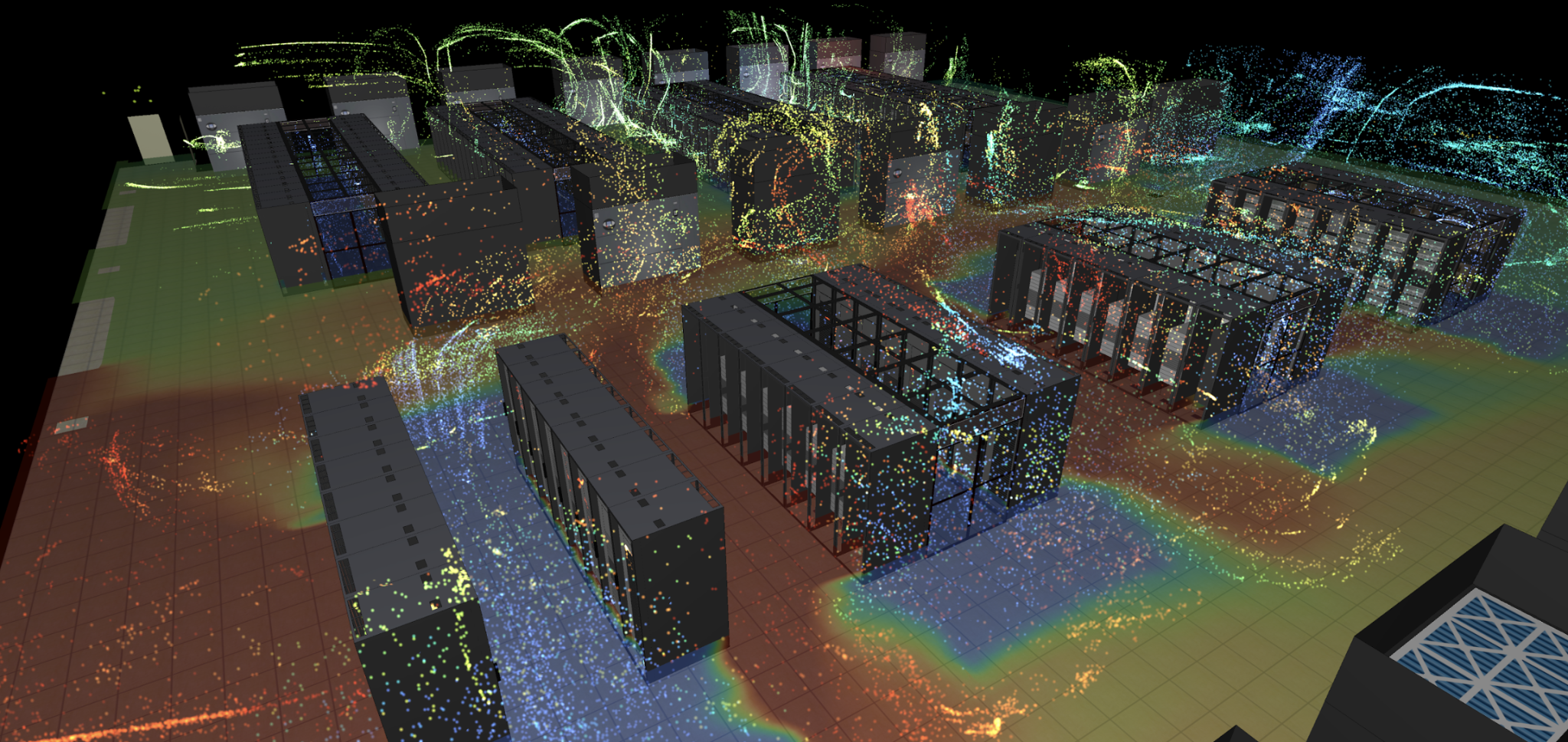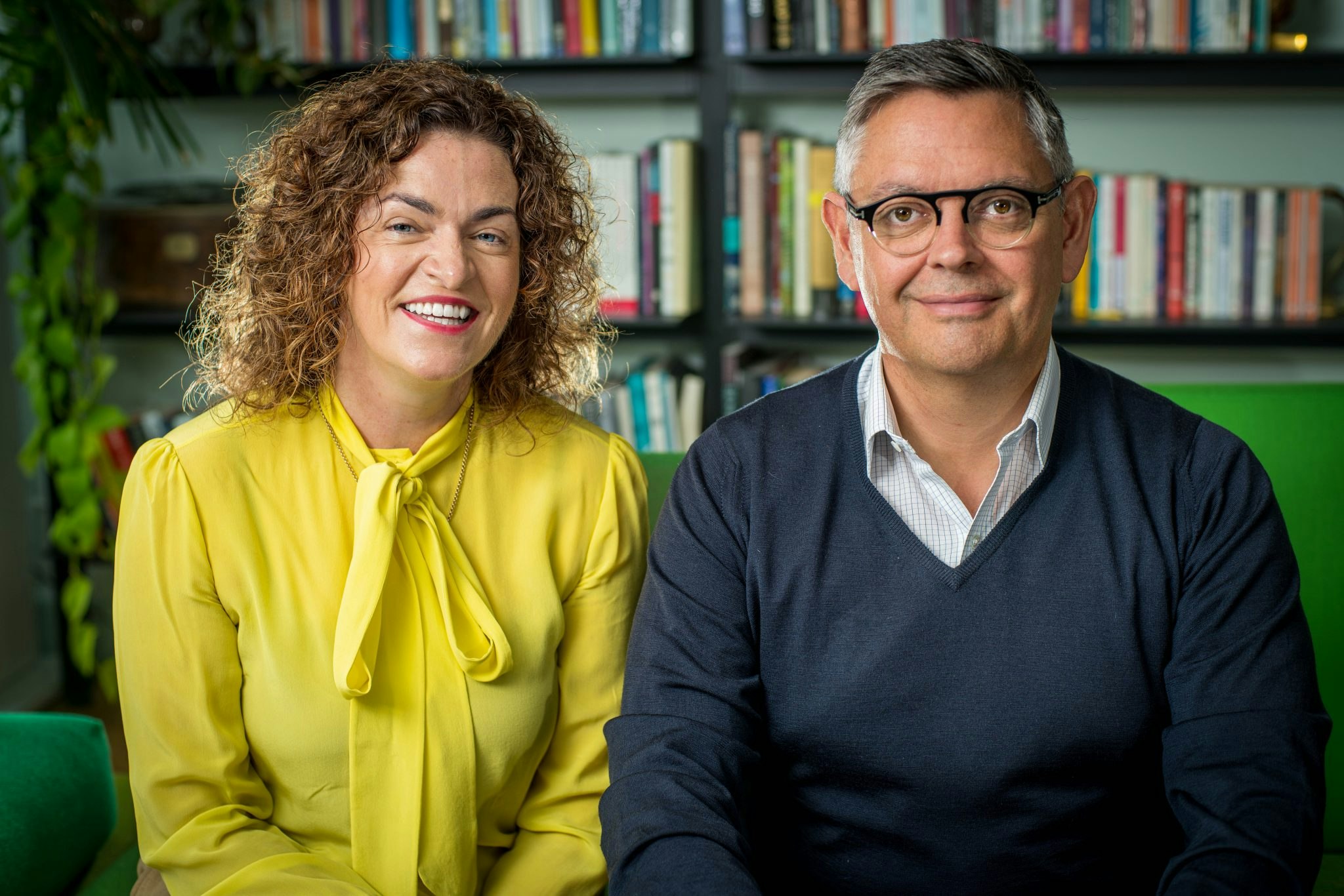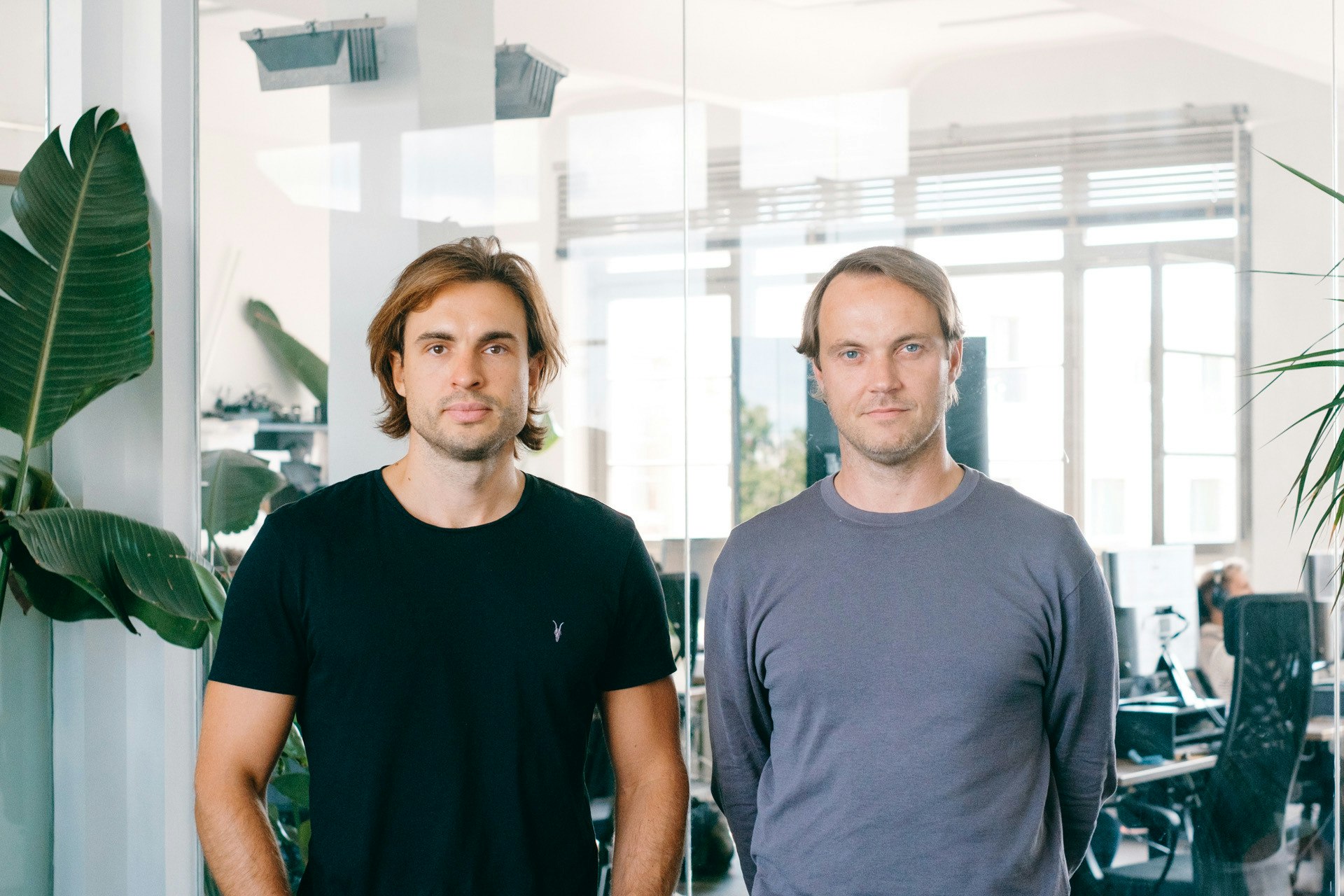Large wind farms are now a familiar sight all over Europe — but in the future, some might look subtly different, at least if Swedish startup Modvion has its way.
The Gothenburg-based company has just delivered its first 105m tall wind turbine tower — made almost completely out of plywood, rather than the more commonly-used steel.
Modvion says wood is cheaper, more sustainable and lighter than steel, making it a far better material for building tall towers than can take advantage of stronger winds at lofty heights.
With plans to build 20 gigawatts of new wind farms annually in Europe over the next few years, Lundman believes it can capture some of that by being a chosen supplier by the world’s biggest wind turbine company, Vestas.
“Vestas wants our towers in its product portfolio. That is also true for its competitors that we collaborate with,” says Otto Lundman, cofounder and CEO of Modvion.
From boats to wind power
Steel is typically used to build wind turbine towers onshore and offshore. But the production of steel, which requires about 20 gigajoules of energy per ton produced, is the most energy-consuming and CO2-emitting industrial activity in the world. (That’s why companies such as H2 Green Steel are trying to make the industry greener.)
Steel is necessary for some construction — but perhaps not everything it’s currently used for.
The founders of Modvion — David Olivegren, an architect who built wooden boats as a hobby, and Otto Lundman, a student at Chalmers University — started with the idea in 2016 and built their first tower in 2020, a 30m tall tower as part of a research project.
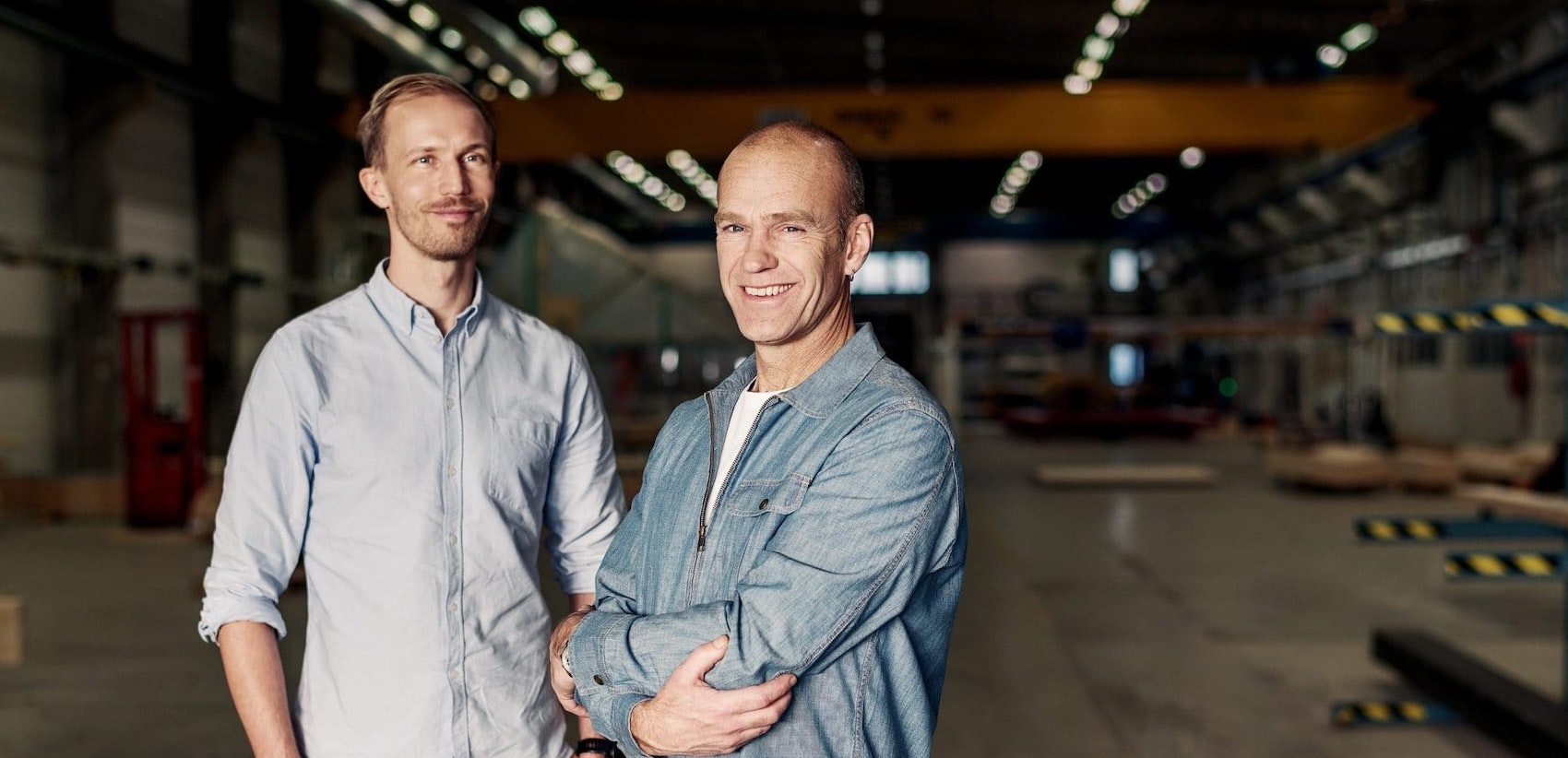
Now, four years later, they’ve built and delivered a 105m-high laminated wooden tower to the local utility company, Varberg Energi. It’s topped with a turbine manufactured by Danish manufacturer Vestas, bringing its total height to 150m.
It weighs 30% less than a steel tower, says Lundman.
“This represents a breakthrough in our efforts to achieve more circularity and recyclability within the wind power industry,” he adds.
Higher and higher
Companies are now looking at permits to build wind power towers that are 300m tall onshore and up to 450m tall offshore, to take advantage of the stronger and more stable winds at height.
“The higher the tower, the greater is the advantage of building in wood,” Lundman says.
According to him, tall towers built with steel have practical challenges such as the need to tighten 50,000 bolts as the tower is put up. Instead, Modvion uses glue to put its wooden modules together, a solution that isn’t possible with steel.
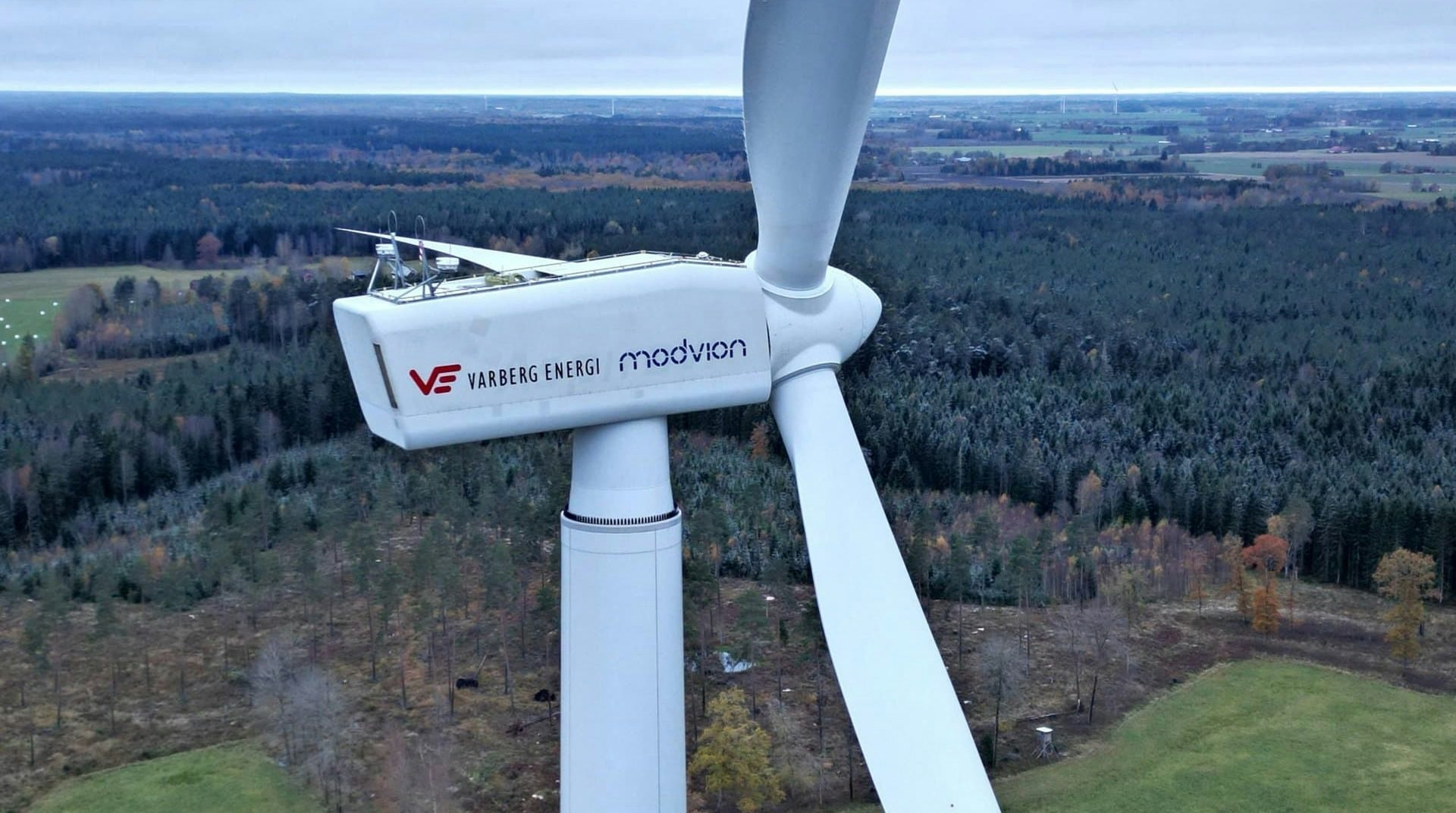
Big companies are interested. Modvion has collaborations with large turbine manufacturers Siemens Gamesa and General Electric as well as a signed deal with Vestas, which is also an investor in Modvion.
Lundman cannot mention any end customers, but previous reports mention a signed letter of intent by Germany’s energy company RWE and a partnership with the Swedish energy company Vattenfall.
But Modvion needs a bigger factory to scale up its operations and build more than a few towers per year. By 2027 it aims to have a commercial factory (in Sweden) up and running with a production capacity of about 100 towers a year, depending on size, each with 6MW capacity. Its current R&D factory can produce large-size towers, but only a few a year.
Capital intensive business
To fund its expansion, Modvion is leaning heavily on grants and capital from the EU. It has already tapped the EU EIC Accelerator programme, the EIC fund and EU Horizon 2020. It will also raise more capital in terms of venture capital and debt.
In February 2023 it raised €11m from various investors including the EIC, Vestas ventures, Swedish VC Course Corrected and Austrian VC Symbia VC.
“Now we are more established, we will be able to finance ourselves in a larger proportion with loans and other solutions,” Lundman says.
Lundman is a strong proponent of building wind power turbines in Scandinavia — and thinks local green energy startups have a headstart.
“Scandinavia often takes advantage of new wind power technology early on. Because the state structure here is such that when you apply for permits, you don't need to decide which technology will be included in it. But you decide the framework, such as overall heights and things like that,” Lundman says.
“In some other markets, the technology must already be specified when applying. And then it takes longer. Northern Europe is also a place where you build very high towers. And that drives the demand for our products as well.”
Correction: In a previous version of this article it said that Modvion has signed deals with Siemens Gamesa and General Electric instead of collaborations.
